France
Aix en Provence
We arrived in Aix en Provence after dark due to a long delay at the car rental at Marseille airport. Finding one’s way into the historic quarter can be a challenge at the best of times, but on a rain-soaked night, it calls for tenacity and humor. Fortunately, Hôtel des Augustins, tucked into a narrow cobbled lane lifted straight out of a travelogue, couldn’t have been a more uplifting welcome.
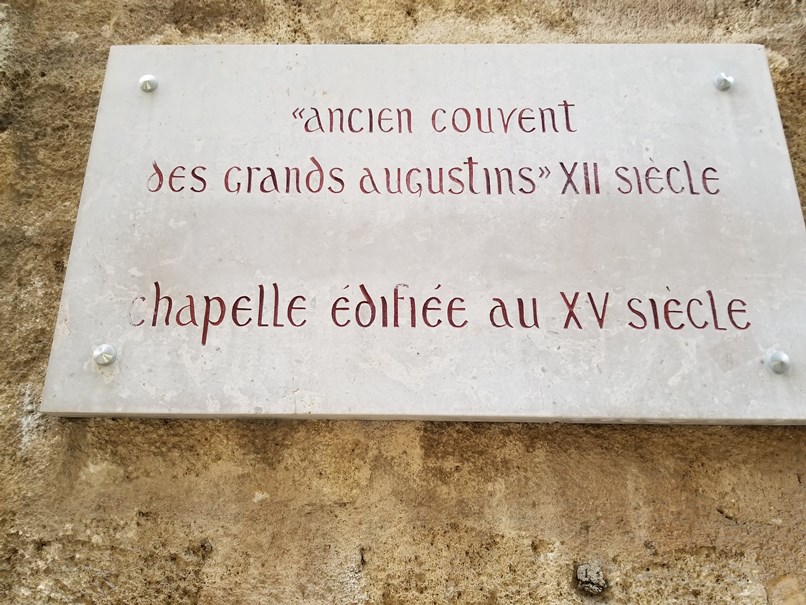
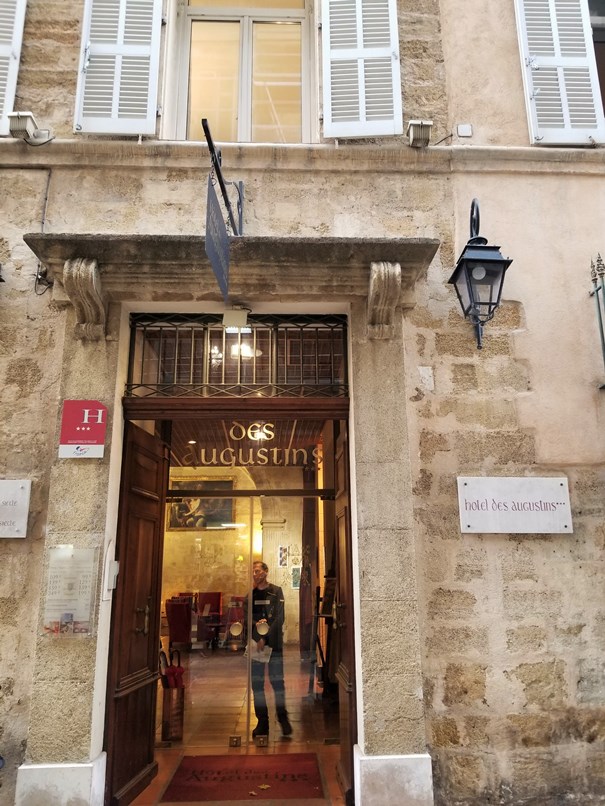
Located a block from Cours de Mirabeau within the walls of a repurposed 12th-century convent, Hôtel des Augustins has spacious, comfortable, European style rooms, and is chock-full of character: The lighting; stone arches; recessed sitting areas; stained-glass windows; spiral staircase with decorative iron railings, which cast whimsical patterns on the stone walls; and the artwork; all unite to create a welcoming, warm, ambiance.
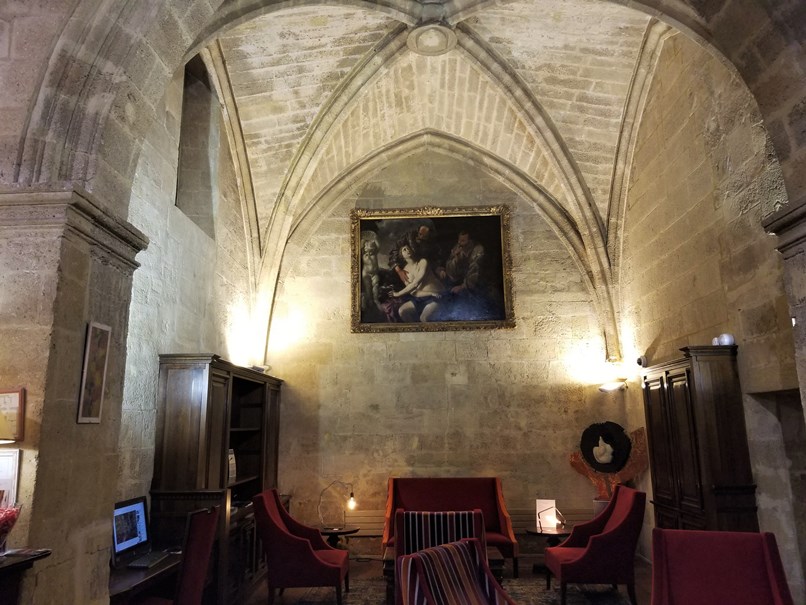
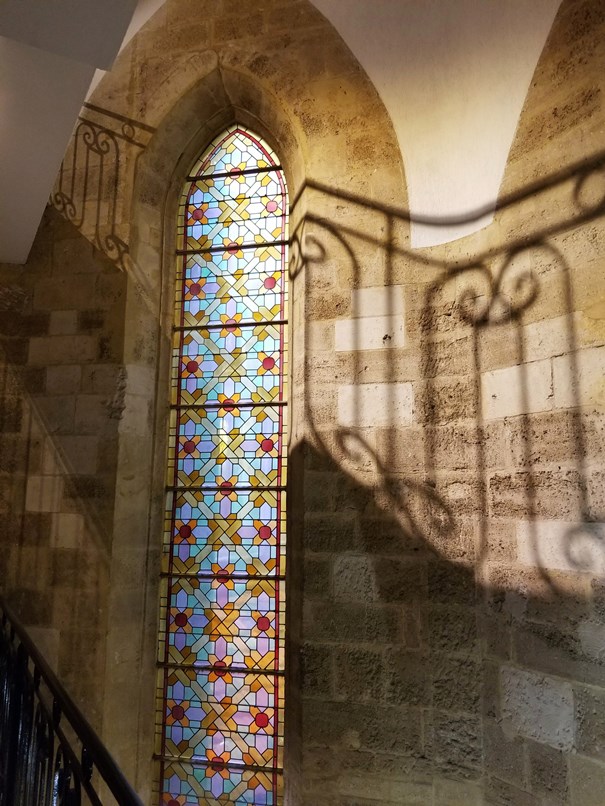
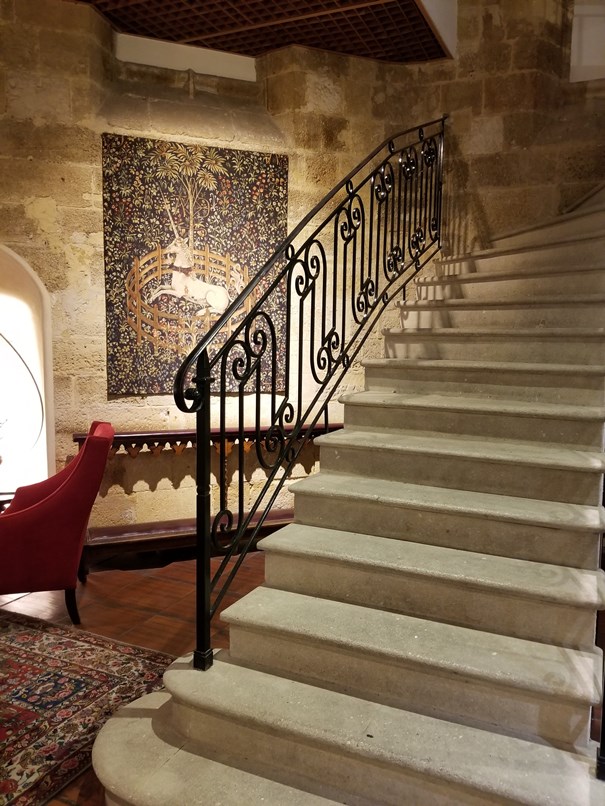
The next morning, we stepped out of the hotel lobby into what could have passed for a French movie set. Narrow streets, tiny squares, store windows displaying trendy clothing, lights glowing inside coffee shops and restaurants, fountains, outdoor cafés where customers lingered over their first coffee of the day, locals heading off to work, while others wheeled their shopping carts to the open-air market. Welcome back to France! What a vibe! What a greeting!
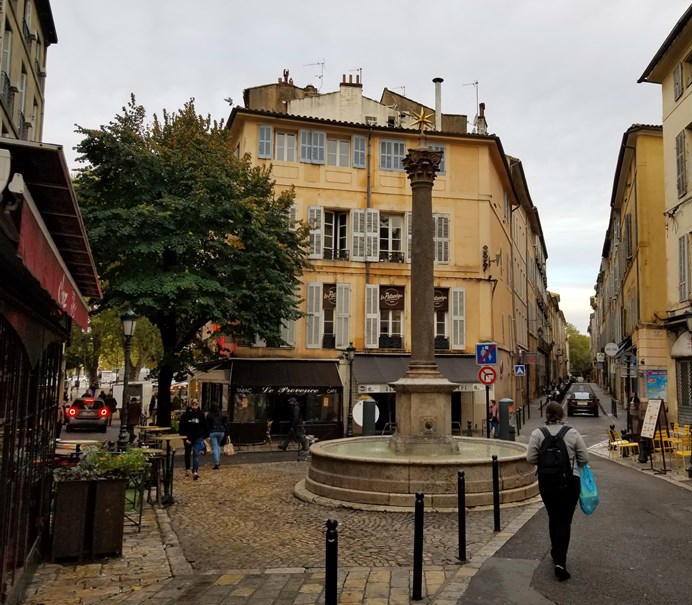
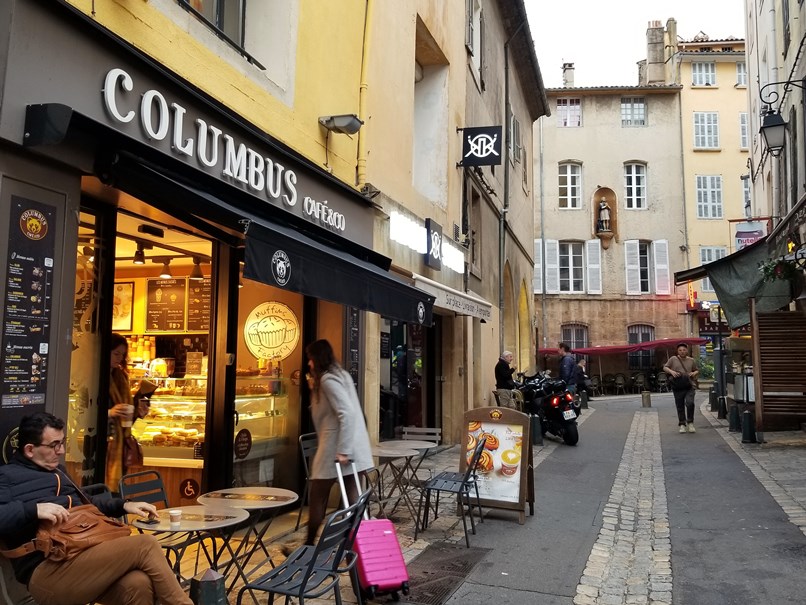
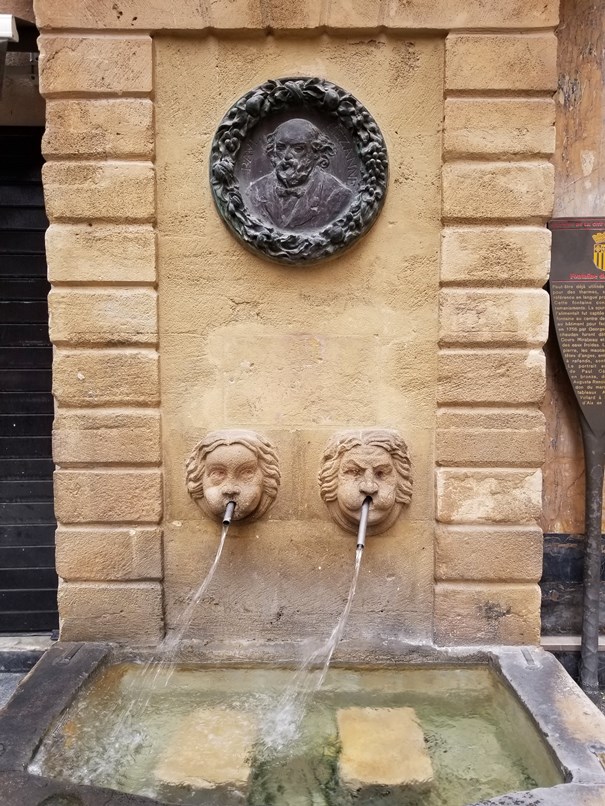

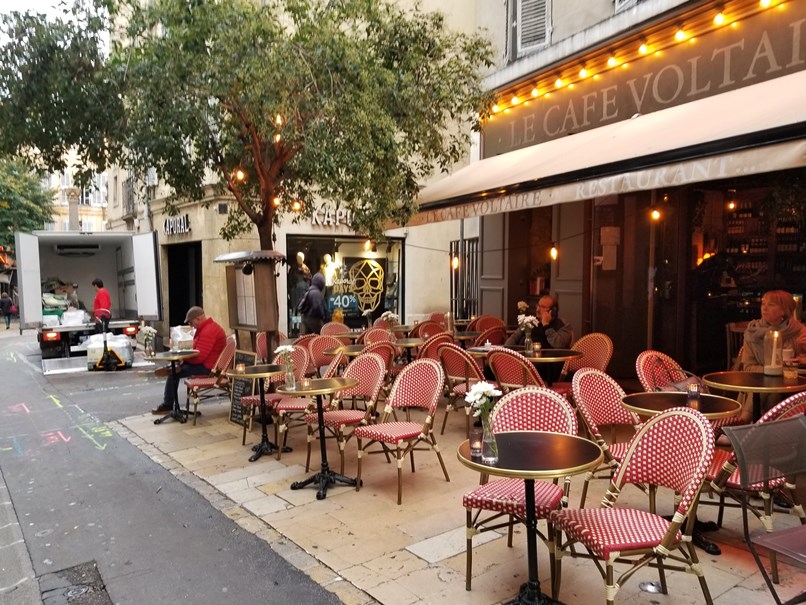
We rounded the corner and spotted ‘Paul,’ the quintessential French boulangerie and patisserie. Fresh baguettes, croissants, and delectable pastries were rolling out of Paul’s ovens and onto the shelves. A constant stream of customers came in and departed carrying their daily baguettes – a French staple. It was love at first sight. Paul instantly became our regular breakfast destination. His whole-grain baguette sandwich with warm brie cheese, honey, and crisp green apple slices, followed by ‘escargots’ – twirly, crunchy, sweet, pastries studded with plump raisins – were sublime.
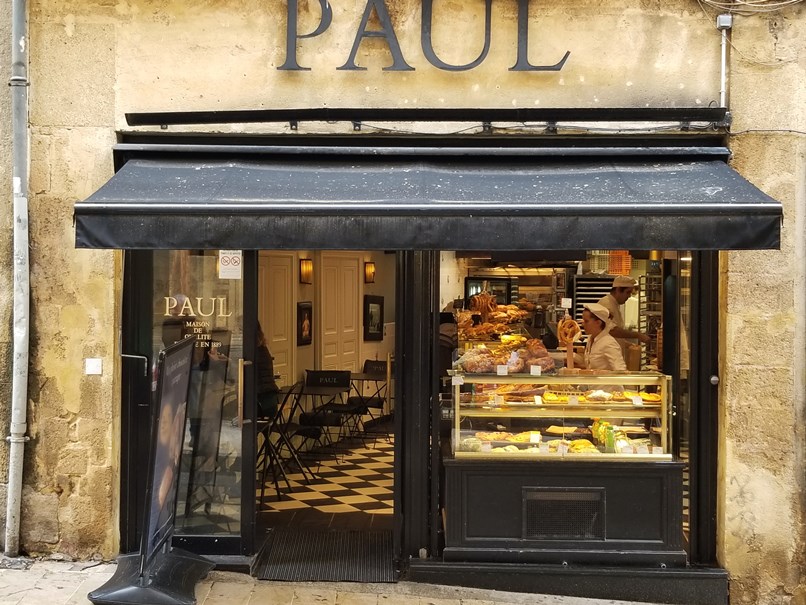
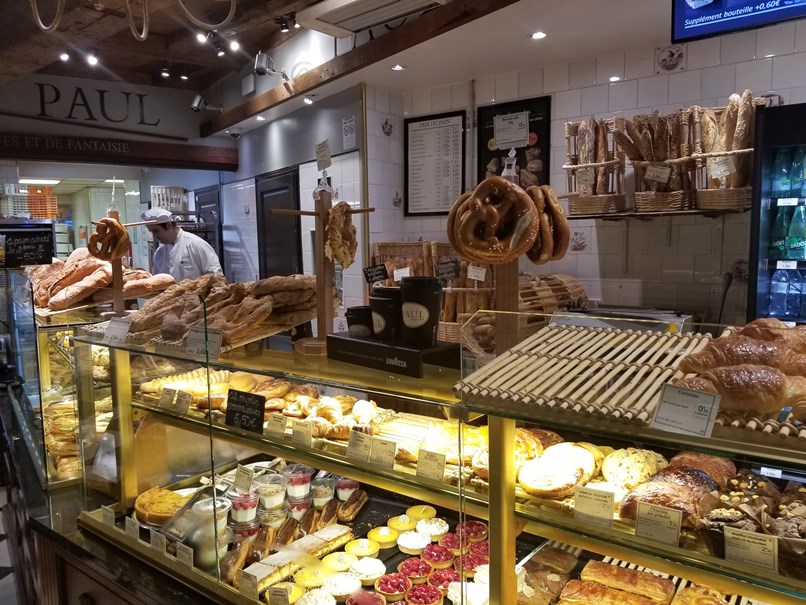
Aix is a town that invites one to choose any little street, walk, get lost, and discover the old mansions, churches, markets, and stores that are impossible to resist, from food to clothing, spa products, and everything in between.
Place DˈAlbertas on 11 Rue Espariat, is a charming cobblestone square with a fountain at its center. In the early 18th century, Henri dˈAlbertas commissioned architect Laurent Vallon to create the elegant Regency style façade for his private mansion. He subsequently purchased the property across the street. Today four beautiful mansions with matching facades that boast large windows and wrought-iron balconies with intricate designs surround this intimate square.

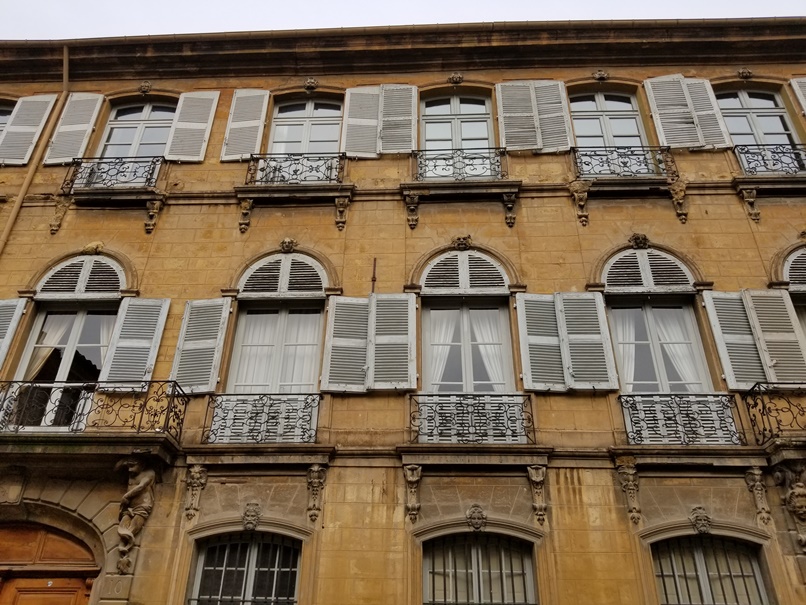
Three times a week – on Tuesdays, Thursdays, and Saturdays – an outdoor market, ‘le grand marché,’ takes place next to the ‘Palais de Justice.’ It’s not to be missed if one wants to experience a centuries-old, authentic French tradition.
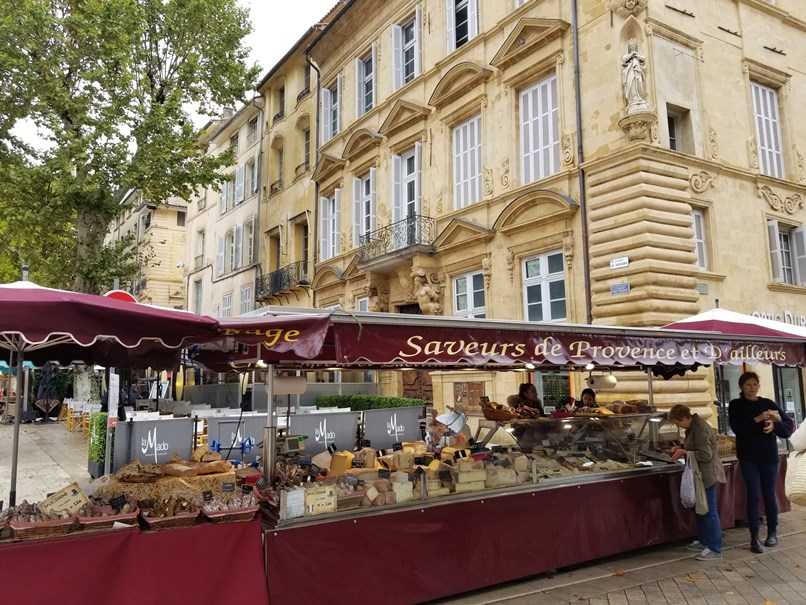
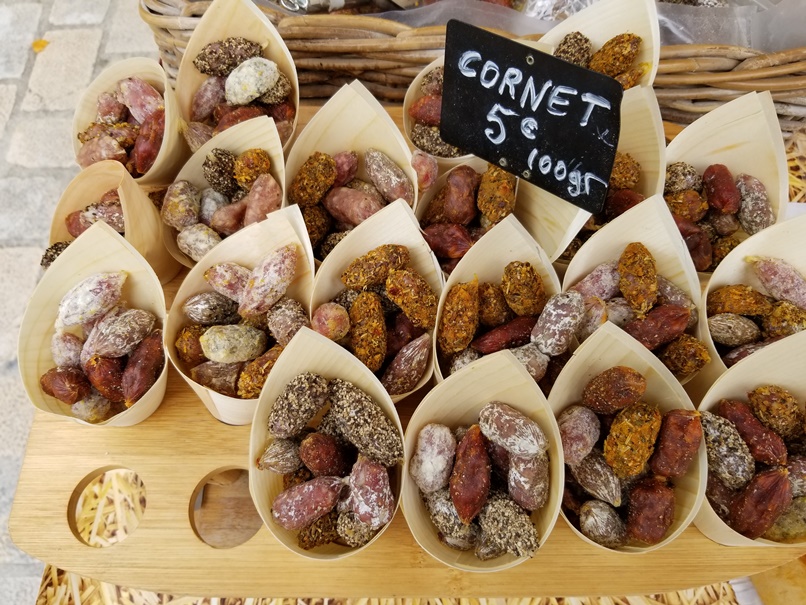
Miniature salamis in a multitude of varieties
Cours Mirabeau, one of France’s grandest boulevards, flanked by elegant mansions, connects the old town to the new town. At the top of the 440 meter (481 yd.) long boulevard stands the sculpture and Fontaine du Roi René (Fountain of King Rene), who was beloved by the people of Aix. It was thanks to him that Aix became known throughout Europe as a center of learning and art. He was also known as ‘Le Roi Vigneron,’ the ‘Wine Growing King’ due to his encouragement of wine growing in Aix. (Notice that he holds a bunch of muscat grapes, which he introduced to Provence).

At the bottom of Cours Mirabeau La Fontaine de la Rotonde – a fountain in the round – is lavished with sculptures. Twelve, bronze, male lions arranged in pairs, look out at the city surrounding them; angels ride on the backs of dolphins; and three female muses draped in layered robes stand atop the fountain. Justice, faces towards Cours Mirabeau; Agriculture, faces Marseille; Fine Arts, faces the direction of Avignon. Spaced between La Fontaine de La Rotonde and Fontaine du Roi René are two more fountains: The 17th century Fontaine de Neuf Canons, and Fontaine Moussue – a fountain covered in moss- whose waters are said to have healing properties.

Paul Cézanne is the famous son of Aix en Provence. Tours take visitors to see where he went to elementary school, got married, his studio, the landscapes that inspired him, and the statue of him next to the tourist office. Cafés and bars are named after him. Sadly, Les Deux Garcons, the restaurant frequented by Cezanne and his childhood friend, Emile Zola – the renowned novelist and playwright – was severely damaged in late 2019 by a fire. It was located on Cours Mirabeau.
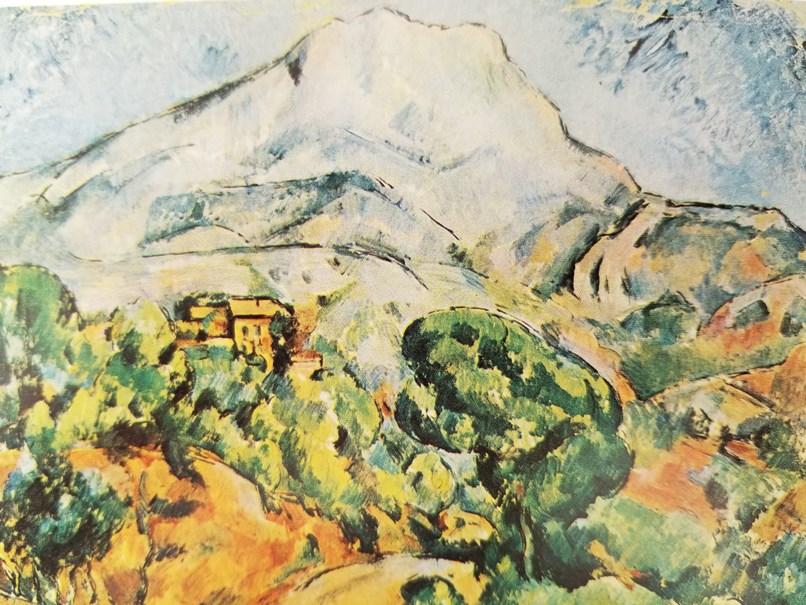
La Montagne Saint Victoire overlooks Aix en Provence. It was the subject of several of Cezanne’s landscape paintings.

On Thursdays, a massive market takes place along the entire length of Cours Mirabeau. We happened upon it and, contrary to all our best intentions, landed up doing some serious shopping.
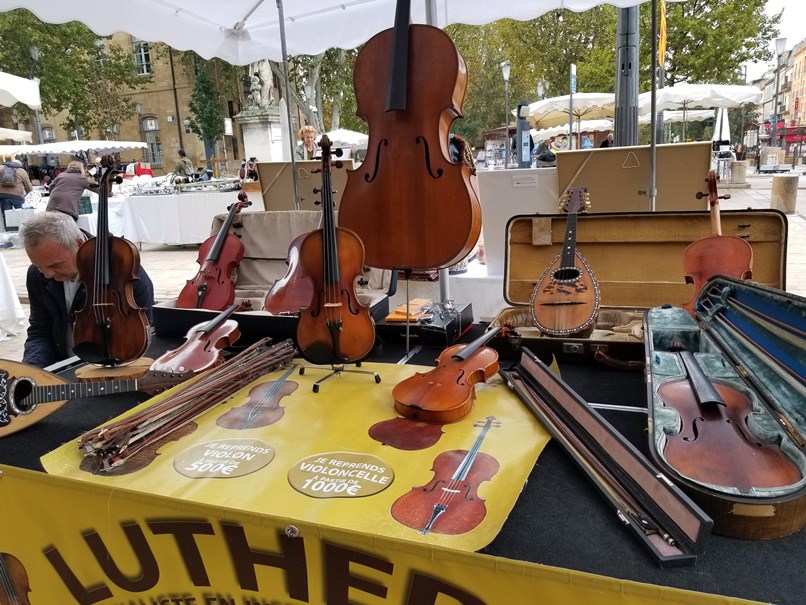
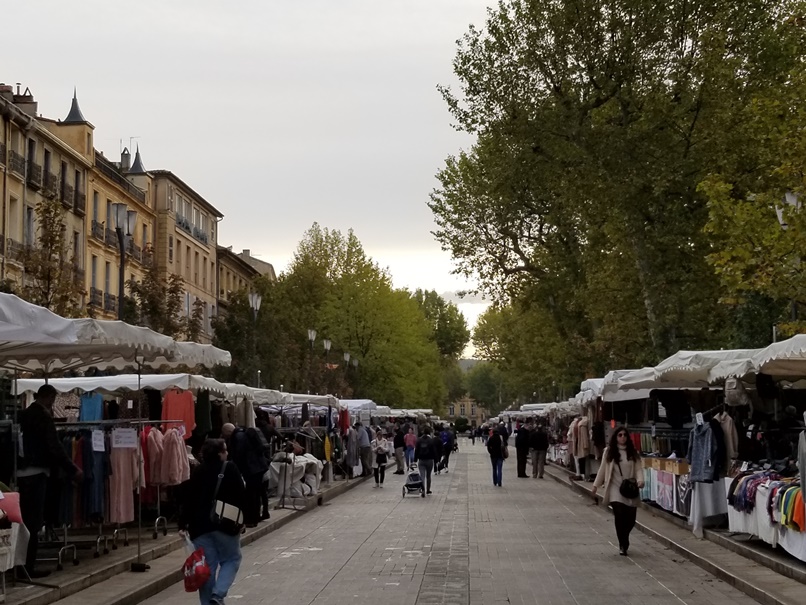
The Musée Granet has a mediocre collection of Cezanne’s art and a small, but terrific collection of Giacometti’s work. We were fortunate to see an extensive exhibition of the French abstract artist Fabienne Verdier’s work. The museum stands beside a beautiful 12th-century church, LˈEglisé St. Jean De Malte, the first Gothic building to be built in Provence.
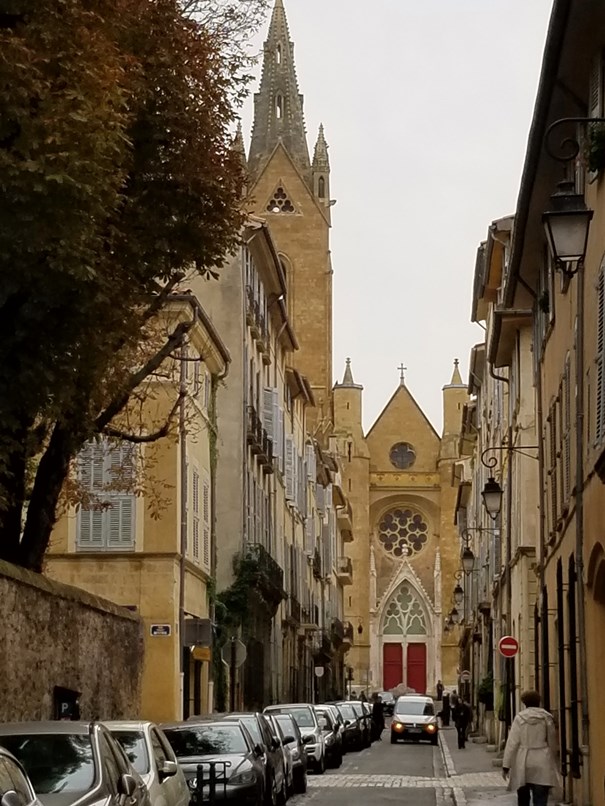
Head to the Hôtel de Ville and the adjacent belfry with its charming astronomical clock that dates to 1661.
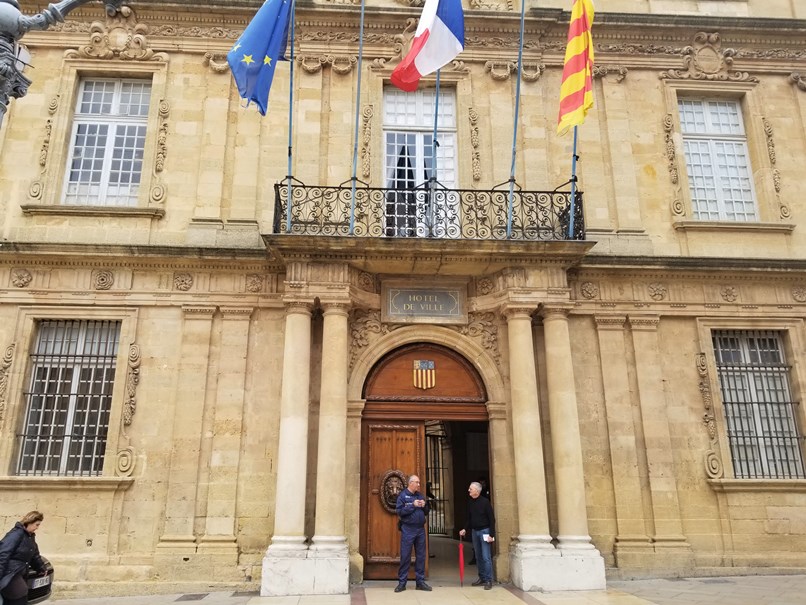
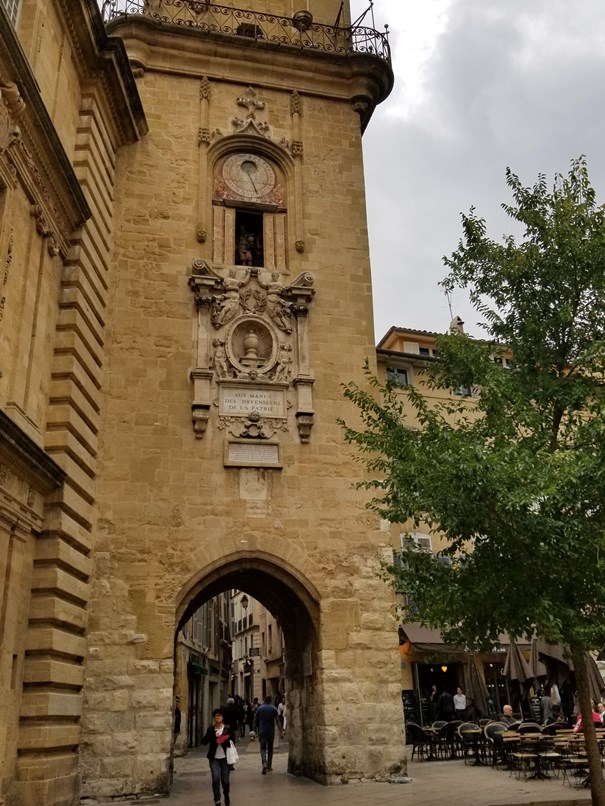
The maze of side streets surrounding the Hôtel de Ville – are worth browsing. The variety of gorgeous boutiques, the squares filled with vibey outdoor cafés, the fountains, the gracious old mansions – it’s an intimate area that oozes with atmosphere and is uniquely French.
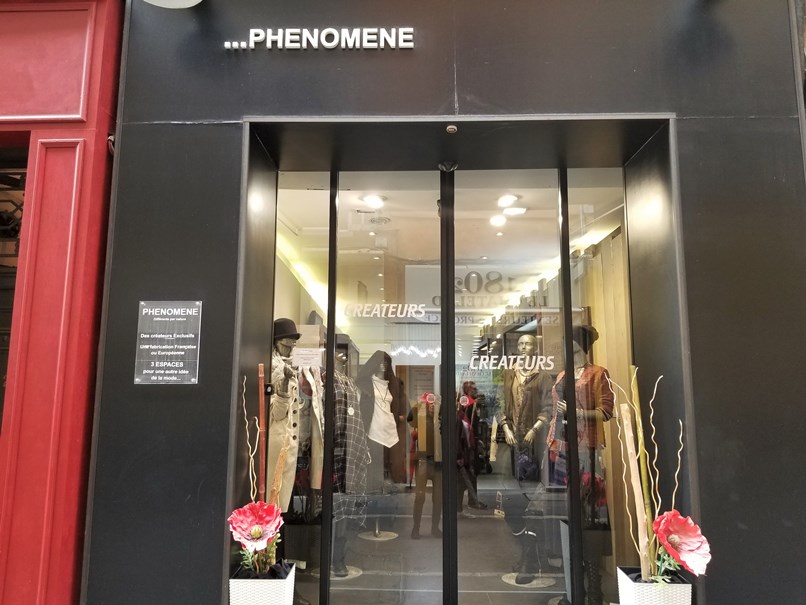
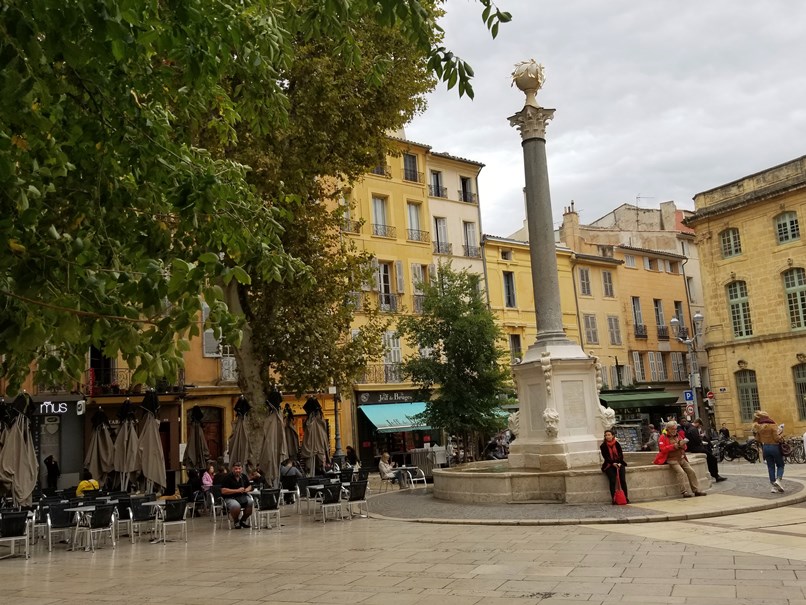
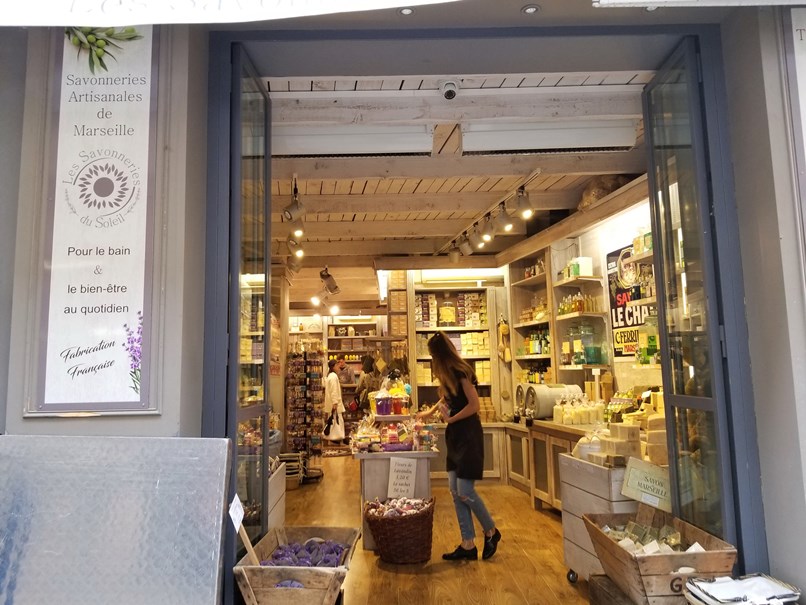
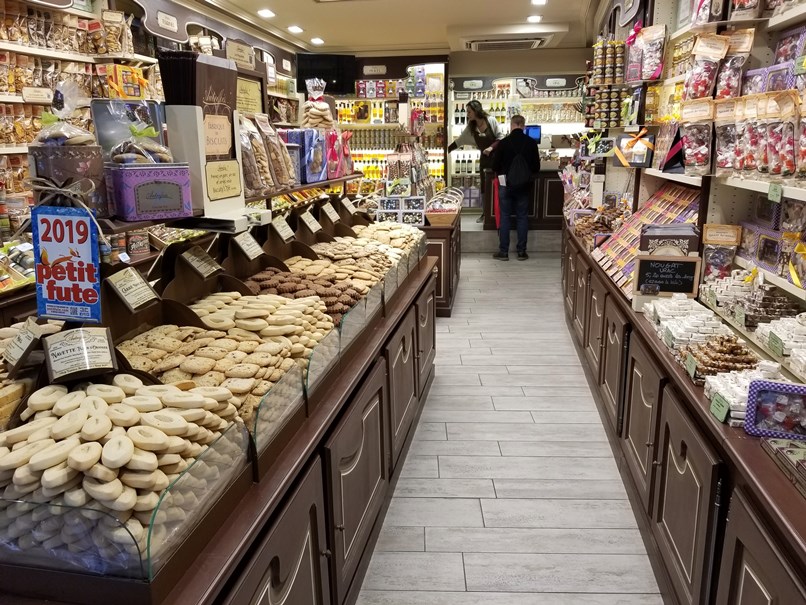
Of all the churches in Aix, if you visit only one, I would say don’t miss Cathédrale St. Sauveur. Just a short walk from the Hôtel de Ville, it was built from the 5th to the 17th century, and it’s fascinating. I was spellbound by the understated elegance and beauty of the Baptistry of Saint Jean, by the architecture, the layers of artwork, and the aura of tranquility that it exudes.
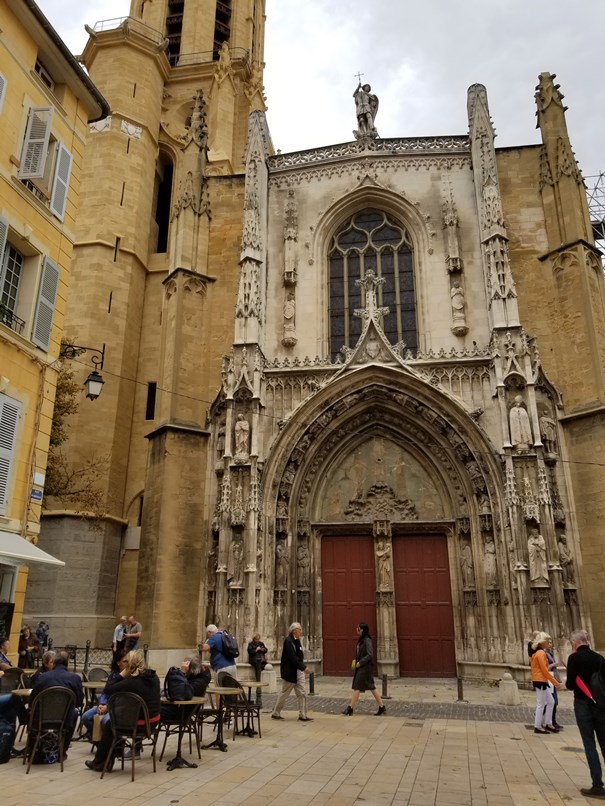
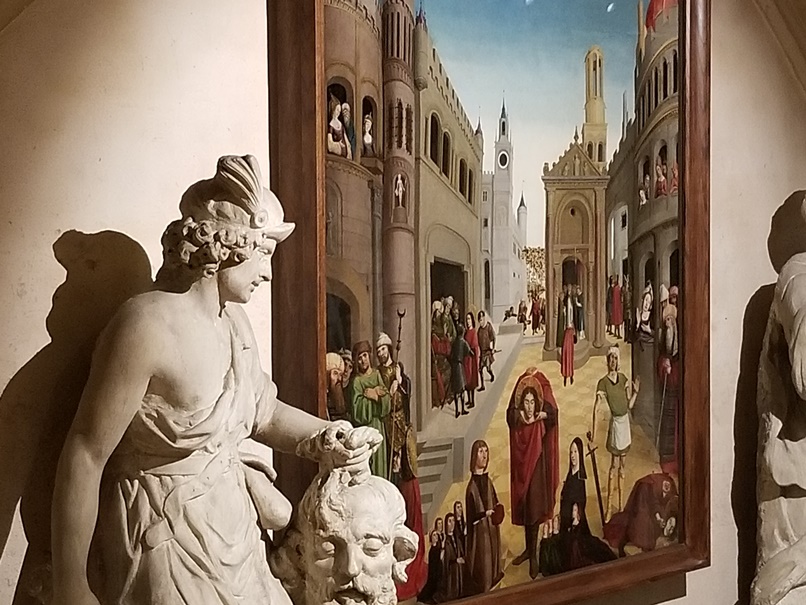
This painting depicts the street and the exterior of the church centuries ago.
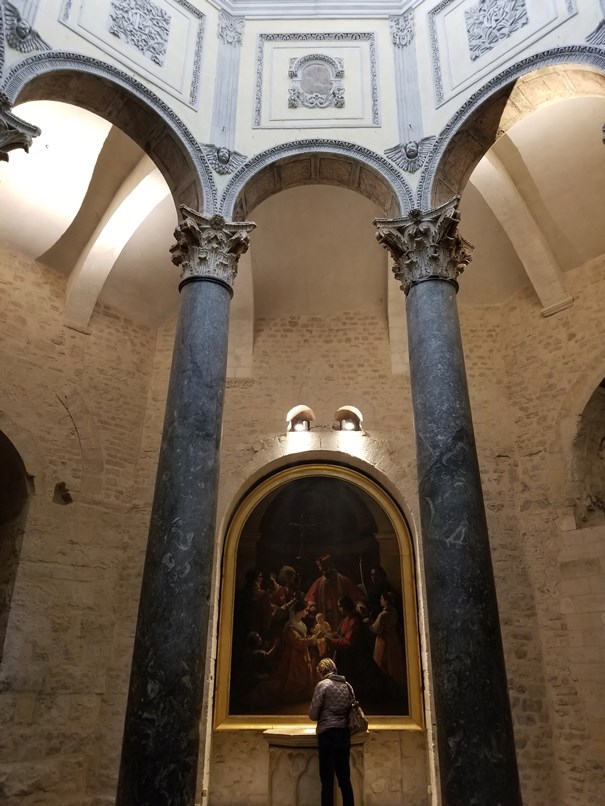
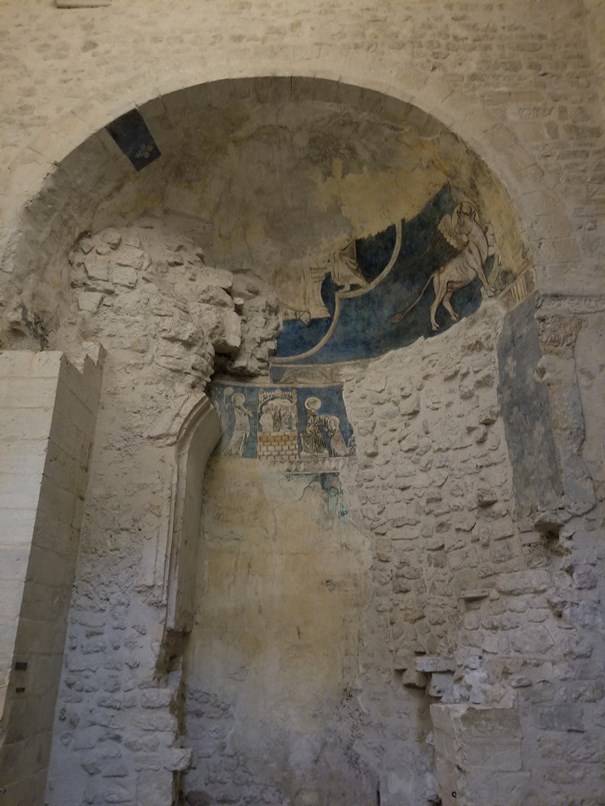
It’s no wonder that people rave about Aix. It has a seductive magnetism that keeps one longing to return.
